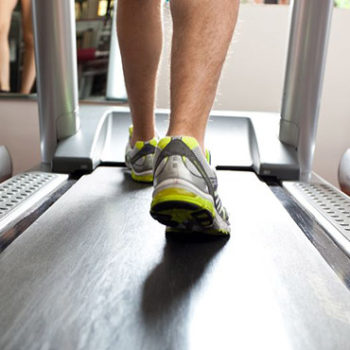Top Exercises for Afterburn Effect

Shredding fat and going from a portly one-pack to a rippling six-pack of washboard abs in no easy quest. It takes determination, resolve and the right approach to get there.
But with the right exercise planning you can make some big differences some your aesthetics and confidence. It really does make all the difference.
In this article we take a look at the afterburn effect. Exactly what is it and why should you harness its power for fat loss?
Here’s what we’ll cover:
- What is excess post-exercise oxygen consumption?
- Why does the afterburn effect help you burn fat?
- What are the top afterburn effect exercises?
What is the Afterburn Effect?
When you go on a car journey your car works hard to burn fuel in order for its mechanical parts to move – and for you to get to your destination.
But what happens when you arrive at your destination? Does your car immediately cool down or does the engine run warm for a while?
That’s right – it continues to produce heat until it gradually returns back to its resting temperature. For a short while after your journey, things are still ‘ticking over’.
And your body works in a similar way.
When you exercise, your metabolism increases. It does this because your body has to work hard to provide your muscles with energy.
But what happens when you stop exercising? Your body does the same as the car – it takes a while for things to cool down and return to resting levels.
And all the time while your body is cooling down your metabolism is still elevated – you’re still burning calories, even though you’re not actually exercising any more.
This is termed the afterburn effect, or to use its proper name – excess post-exercise oxygen consumption (EPOC).
Why does EPOC help you burn fat?
The physiological changes that take place during EPOC are quite complex. But being able to understand even just a little bit of what’s going off can help you plan better fat burning exercises.
When you start exercising, your body begins to increase the amount of oxygen it uses. It has to do this because you need it to help use the stored energy in your body. And whilst you’re exercising your body uses more and more and goes further and further to what’s called an oxygen deficit.
During exercise you begin to breathe faster and deeper to get more oxygen into your lungs, and your heart rate and blood pressure increase in order to push it to the places it’s needed.
Consequently, your metabolic rate (the amount of energy you are breaking down) goes up. You burn more fat and carbs and this helps you shred body fat the more often you do it.
After exercise your body needs to make up the lost oxygen by continuing to work hard to replace lost energy and to remove any lactic acid or by-products – this is called the oxygen debt and it’s something that has to be repaid for the body to optimally post-exercise.
Oxygen debt is simply the amount of oxygen needed to restore your body back to normal. But the cool thing here is that the higher the amount of oxygen debt, the higher your metabolic rate will be after exercise – and the more calories you’ll burn too.
So the key to fat loss from the afterburn comes down to one thing – creating as high an oxygen deficit as possible, to make the body work hard to repay the debt.
Key Point: The afterburn effect refers to the increase in metabolism after exercise where you continue to burn calories above resting level.
How Do You Maximize the Afterburn Effect?
There is a lot of data showing that higher afterburn effects correlate with higher exercise intensities.
Take the research from Børsheim and colleagues for example [1]. Published in the journal Sports Medicine, this research showed that a threshold of 80% of maximum heart rate seems to exist for triggering a large afterburn effect.
Exercise at less then 80% would leave your afterburn effect burning fat for around 2-3 hours after exercise, but above 80% and that number explodes up to 10.5 hours – even as high as 24 hours in some cases.
That means that you can go home, put your feet up and still be burning fat for the rest of the day.
Calories matter when it comes to fat loss
In order to burn fat you have to achieve an energy deficit. That means you need to take less calories in than you burn off.
You can do this one of three ways. You can either:
- Eat less
- Exercise more
- Eat less and exercise more
This doesn’t mean that training at lower intensities isn’t useful for fat loss, but high-intensity work not only burns more calories during exercise – it burns many, many more after exercise too.
Key Points:
- Higher intensity exercise has the most potent afterburn effect.
- Exercises that consume more oxygen burn more energy.
- EPOC is most definitely influenced by intensity rather than duration.
The Best Afterburn Exercises for Fat Loss
The beauty of exercise is there are so many different ways to do it. Some you might enjoy and others you might not. You’ve got a million different choices when it comes to something you’ll stick to.
But if you’re really looking to maximize the afterburn effect then you need to think logically about which ones are intense enough to create EPOC.
#1. High-intensity interval training
HIIT training is a time-efficient, explosive cardio training protocol that burns maximum calories in minimal time.
There are lots of different ways to approach it, but it’s typically made up of repeated bouts of high intensity work (above 80% of your maximum heart rate) followed by recovery intervals at a low intensity.
It is commonly performed on rowing machines, bikes or with sprints, but can be performed on most exercises if you can safely work at a high speed at intensity.
One of the most afterburn-inducing HITT systems is Tabata training. This is a precise protocol that involves working all-out (as hard as you possibly can) for 20 seconds. And recovering for 10 seconds (as slow as you can, but keep moving). You do this 8 times for a total workout time of 4 minutes. That’s it.
Why is it good for EPOC? Not only does it burn a massive 14.5 kcal per minute [2], it absolutely maxes out your aerobic system, leading to a huge afterburn effect.
#2. Circuit training
Circuit-style classes have been popular since the 1940s and it’s a tribute to how effective it is to say it’s lasted the test of time.
Resistance training has a potent afterburn effect. And when it involves big exercises with multiple muscle groups, and is structured in a way to forces blood around from one muscle to the next, that afterburn effect increases exponentially.
Alternating upper and lower body exercises forces you to increase the amount of oxygen travelling around the body. And that greater demand for oxygen will have a beneficial effect on not only calories burned during the session, but afterwards too.
One study found that when volunteers took part in either a circuit training session or similar-intensity treadmill running, circuits resulted in a significantly higher EPOC effect for the first 30-minutes after exercise, as well as heart rate, perceived exertion and fat oxidation [3].
In fact, circuit training is so closely related to a high afterburn effect that many people have renamed them metabolic circuits due to their massive stimulus for increased metabolism and fat loss.
#3. Strength training
When you think of intense exercise that elevates your heart rate and slices through oxygen consumption, you might not necessarily think of strength training. But rest assured – even standard weightlifting can elevate your post-exercise calorie burn.
For example, Børsheim and Bahr [1] found that when resistance training was analyzed against moderate intensity aerobic training, resistance “produced a greater EPOC response”.
It doesn’t even have to be that heavy either to create an afterburn effect either.
Thornton et al [4] found that when 14 female volunteers lifted either 2 sets of 8 reps at 85% of their maximum or 2 sets of 15 reps at 45% of their max, both groups reported an increase in EPOC – and the heavier group saw only a small increase compared to the lighter group.
And if you combine weight training with running, your EPOC will go up even more.
In a study from the Journal of Strength and Conditioning Research , [5] volunteers were asked to take part in either:
- A run only workout
- A weights only session,
- Run followed by weights
- Weights followed by a run.
And it was those who took part in a ‘run-resistance’ session that reported the highest EPOC values.
Summary
The key to fat loss is to acheive a calorie deficit – to burn more calories in a day than you burn off. Choosing exercises that not only ramp up calorie burn during exercise, but also afterwards are key to winning that battle… and that’s where the afterburn effect comes in.
Programming workouts with a big EPOC factor will make a big difference to your physique, so make sure you incorporate interval training, circuits and weight lifting into your routine on a regular basis to really maximize your shred.



